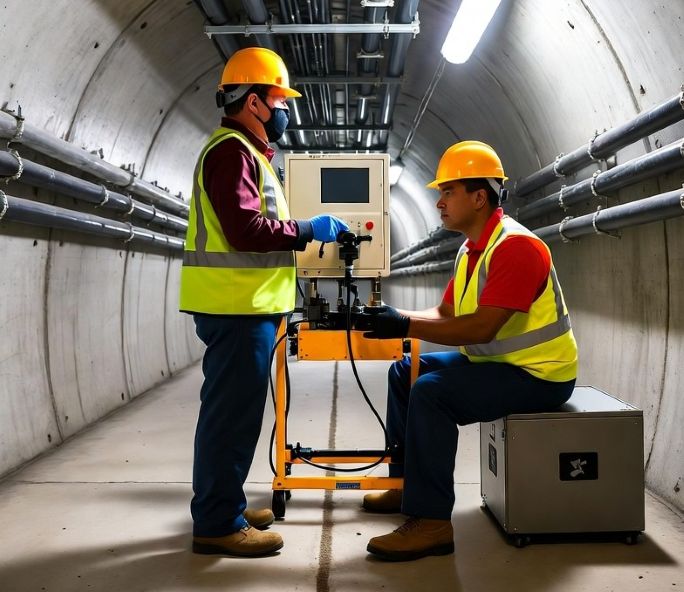
Europe’s cities rely on vast underground systems that few people ever see. Beneath the streets, a network of pipes and drains keeps homes, businesses, and industries running smoothly. As urban infrastructure ages, the demand for maintenance and innovation has led to the rise of a new kind of workforce. Skilled professionals in sewer rehabilitation are becoming essential players in protecting public health and the environment.
With modern methods such as pipe relining, companies are using advanced techniques to restore old pipelines without the need for digging. This shift has not only improved efficiency but also created new job opportunities for technicians, engineers, and specialists. The field of Sewer Renovation or rioolrenovatie in Dutch represents a growing area where technology and craftsmanship meet, offering stable, future-focused careers for skilled workers across Europe.
The Demand for Skilled Labor Beneath the Streets
Urban growth and aging infrastructure are driving the need for skilled hands and technical minds. Many European cities are facing decades-old sewage systems that require repair and modernization. Traditional excavation methods are expensive and disruptive, but newer approaches like trenchless rehabilitation make it possible to repair pipelines efficiently and safely. These innovations demand a range of expertise, from operating high-tech cameras to managing resin-based relining materials.
Vocational training institutions are responding to this demand. Programs now focus on developing specialized skills for infrastructure maintenance, plumbing technology, and environmental engineering. Trainees learn not just how to fix a pipe but how to interpret data from sensors, inspect with robotic tools, and implement eco-friendly repair methods. The growing technical aspect of sewer rehabilitation transforms what was once seen as manual labor into a respected and rewarding profession.
Technology Meets Tradition
The modern sewer technician works with precision tools and smart diagnostics. Using camera systems, sensors, and AI-based analysis, technicians can pinpoint blockages, cracks, and leaks without breaking ground. The process of pipe relining, where a flexible liner is inserted and hardened inside an old pipe, has become a benchmark of innovation. It extends the lifespan of sewer systems while reducing costs, waste, and environmental impact.
These methods are changing the image of the industry. What was once a physically demanding and overlooked job is now a field of innovation and technical mastery.
“We’re no longer just fixing pipes, we’re maintaining lifelines,” says a sewer engineer from Rotterdam.
This evolution creates space for diverse talents, men and women trained in mechanics, chemistry, and environmental sciences, who contribute to cleaner cities and safer communities.
Creating Jobs for the Future
Every innovation in infrastructure brings new career opportunities. The need for skilled professionals goes beyond repair work. There are roles in project management, research, materials testing, and digital mapping. As European governments emphasize sustainability, more funds are being directed toward upgrading utilities and reducing pollution. This investment trickles down into employment, creating thousands of stable jobs across construction, environmental consulting, and water management.
Companies specializing in sewer rehabilitation are expanding rapidly. Many are partnering with local municipalities and training centers to ensure a steady pipeline of talent. Similar trends are seen in Belgium’s HVAC sector, where sustainable building systems and sanitation careers are also on the rise, as discussed in this overview of Belgium’s growing HVAC job market. By promoting apprenticeships and technical education, these partnerships ensure that young workers have access to hands-on learning and long-term careers. The emphasis on continuous training also allows experienced professionals to adapt to new technologies as they emerge.
Why Vocational Training Matters
Vocational education remains the backbone of this sector’s growth. Unlike traditional academic programs, vocational courses focus on practical applications and real-world challenges. Students gain firsthand experience in diagnosing pipe conditions, handling equipment, and understanding environmental regulations. This makes them job-ready faster and more adaptable to on-site demands.
Employers value workers who can combine practical knowledge with digital skills. From reading blueprints to operating robotic inspection systems, the modern technician needs both field experience and technological awareness. This mix of skills ensures that Europe’s urban infrastructure remains reliable, efficient, and sustainable for generations to come.
Conclusion: A Future Built on Skill and Purpose
The rise of sewer rehabilitation is reshaping how we view skilled labor and urban maintenance. With the increasing use of advanced techniques like Sewer Renovation, the sector is opening doors to careers that are both meaningful and future-proof. These workers safeguard communities by maintaining vital infrastructure that supports clean water and sanitation, an essential service often taken for granted.
Beneath the surface, there’s a workforce building Europe’s sustainable future. Through technical innovation, vocational training, and a renewed respect for skilled trades, sewer rehabilitation proves that some of the most important jobs happen where few people ever look.

